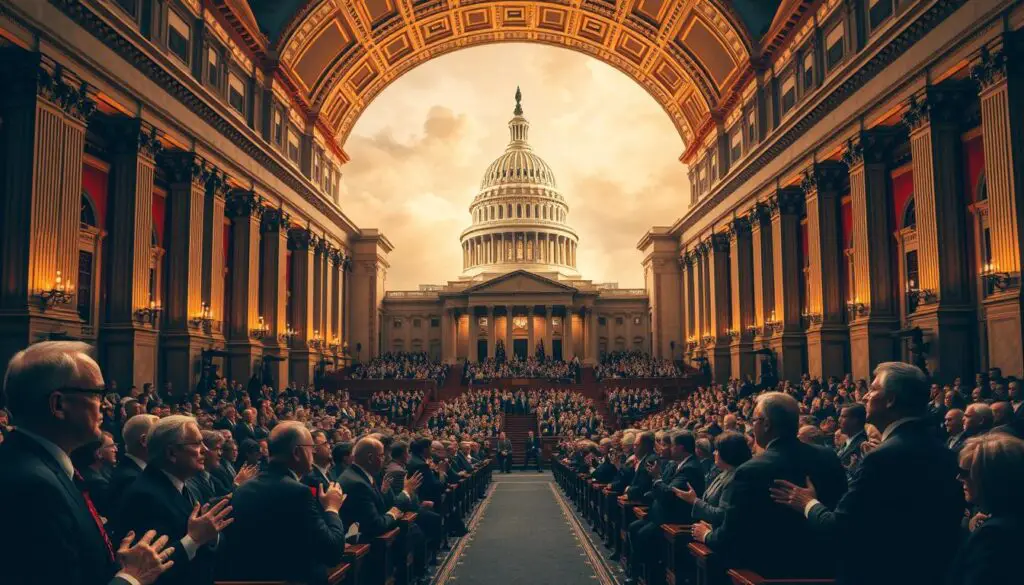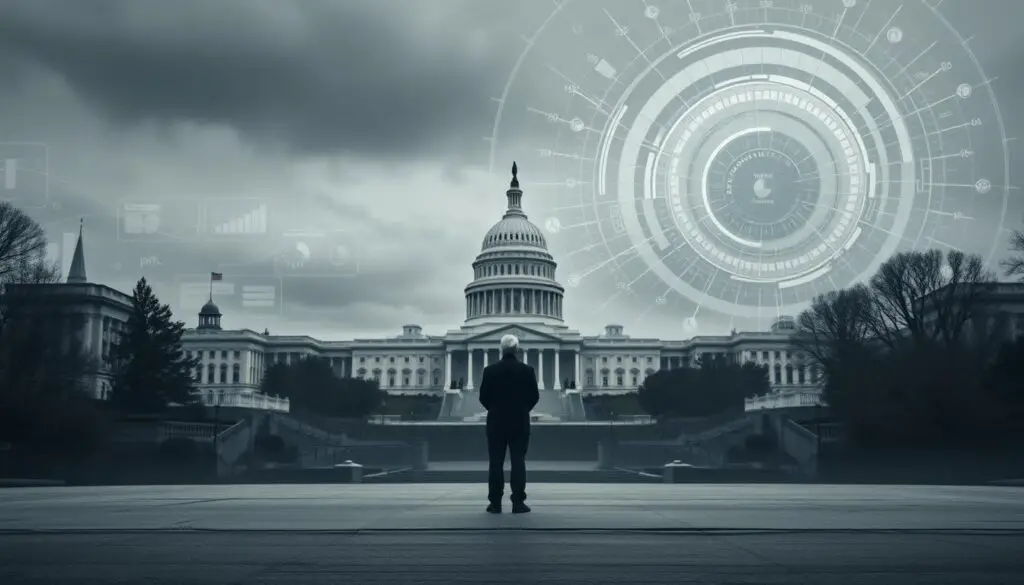For over a century, members of the LDS Church have shaped U.S. governance through principled leadership. Since Utah became a state in 1896, Latter-day Saints have held prominent roles in the United States Congress, blending faith with public service. Figures like Senator Mitt Romney and the late Orrin Hatch exemplify this tradition, balancing strong moral values with bipartisan collaboration.
Their impact stretches far beyond Utah. At least 15 current federal lawmakers identify as Latter-day Saints, representing states from Idaho to Arizona. Many serve for decades – former Senator Mike Lee spent 12 years crafting legislation, while Hatch’s 42-year Senate career remains one of the longest in history.
What drives this enduring influence? The LDS Church emphasizes community responsibility, inspiring members to pursue civic engagement. This ethos creates leaders who prioritize consensus-building, evident in Romney’s bipartisan infrastructure deals and Hatch’s work on child healthcare reforms.
In this article, we’ll explore:
- Key historical milestones for Latter-day Saint politicians
- Profiles of influential figures shaping modern policy
- How faith traditions inform legislative approaches
Key Takeaways
- Utah’s 1896 statehood marked a turning point for LDS political representation
- Long-serving members like Orrin Hatch shaped decades of U.S. policy
- 15+ current Congress members identify as Latter-day Saints
- Church teachings strongly emphasize public service ethics
- Bipartisan collaboration remains a hallmark for these lawmakers
- Detailed profiles reveal unique leadership approaches
Overview of LDS Political Influence
When Utah became a state in 1896, it sparked a quiet revolution in American governance. Members of The Church of Jesus Christ of Latter-day Saints began transitioning from local leadership roles to national platforms. Early pioneers like Reed Smoot, who served 30 years in the Senate, proved faith and policy could coexist in Washington’s halls.
Historical Context and Church Membership
By 1900, just four years after statehood, Utah sent its first LDS representatives to the U.S. House. Pew Research notes this group now makes up 1.7% of Congress – matching their share of the U.S. population. Their growth mirrors America’s westward expansion, with early lawmakers focusing on land rights and economic development.
Growth of Influence Since 1896
Today’s Latter-day Saints in Congress span multiple states and parties. Ben McAdams (D-UT) and John Curtis (R-UT) show how shared values bridge political divides. Idaho’s Mike Crapo, serving since 1999, highlights the community’s knack for long-term impact.
From New Mexico to Washington D.C., these leaders blend scriptural principles with practical lawmaking. Their rise reflects both church teachings on service and shifting voter priorities over 128 years. This foundation sets the stage for exploring their modern policy achievements next.
mormon politicians: Impact on U.S. Politics

Ethical governance rooted in community values defines congressional leaders from The Church of Jesus Christ of Latter-day Saints. Their 3% representation in Congress outpaces their 2% share of the U.S. population, creating outsized policy influence.
Representation in the United States Congress
Fifteen federal lawmakers currently identify as Latter-day Saints. Utah’s delegation stands out – four of its six congressional seats belong to church members. Rep. Blake Moore (R-UT) recently co-sponsored bipartisan tax reforms benefiting families in Salt Lake and beyond.
Role in Shaping Policy and Legislation
Former Sen. Tom Udall (D-NM) spent 12 years championing environmental protections. Rep. Burgess Owens (R-UT) drives education reforms, stating: “Quality schools build strong communities.” These efforts reflect a focus on long-term societal stability.
| Religious Group | % of U.S. Population | % in Congress | Key States |
|---|---|---|---|
| Latter-day Saints | 2% | 3% | UT, ID, AZ |
| Other Faiths | 78% | 81% | Nationwide |
Religious Demographics vs. Political Presence
Sen. Mike Lee (R-UT) exemplifies balancing faith with governance. His 14-year career includes privacy law reforms and disaster funding measures. While some critics question church-state overlap, most colleagues praise these lawmakers’ focus on consensus-building.
Over the last decade, Latter-day Saint members have increasingly chaired powerful committees. This strategic positioning lets them advance both local priorities and national initiatives, proving faith-inspired leadership can thrive in modern politics.
Profiles of Leading LDS Lawmakers
America’s political landscape features dedicated public servants from diverse backgrounds. Among them, Latter-day Saint legislators stand out for their blend of faith-driven ethics and practical governance. Let’s explore modern leaders shaping policy while honoring tradition.
Senate Standouts and Their Contributions
Senator Mitt Romney made history as the first LDS member to vote for a president’s impeachment from his own party. His 2019 vote showcased independence, reflecting his motto: “Country over party.” Romney also co-authored the 2021 infrastructure bill, securing $550 billion for roads and broadband.
House of Representatives Leaders
Utah’s John Curtis chairs the House Energy Subcommittee, pushing clean energy reforms since 2017. Fellow Utahn Blake Moore helped pass 2023 tax credits for families, stating: “Smart policy lifts all communities.” Idaho’s Mike Crapo, serving 25+ years, recently expanded rural healthcare access.
| Era | Key Figures | Tenure | Notable Achievement |
|---|---|---|---|
| Historical (1980s-2010s) | Orrin Hatch | 42 years | CHIP healthcare program |
| Modern (2020s) | Burgess Owens | 3 years | Workforce training reforms |
Shifting Priorities Over Time
Early leaders focused on state-building issues like water rights. Today’s lawmakers tackle climate tech and AI regulation. Pew Research notes 68% of LDS members in Congress now serve on committees shaping national security or innovation.
These profiles reveal a shared thread: service rooted in community values. From Romney’s bipartisan deals to Curtis’ energy reforms, their work bridges ancestral principles with 21st-century challenges.
Conclusion

The enduring legacy of Latter-day Saint lawmakers reveals a unique blend of faith and civic duty. From Utah’s 1896 statehood to today’s 15 members in the United States Congress, these leaders have shaped policies benefiting communities nationwide. Their work spans decades – like Tom Udall’s environmental wins in New Mexico and Mike Lee’s privacy reforms from Salt Lake to D.C.
Though representing just 2% of the U.S. population, their influence exceeds numerical size. The Church of Jesus Christ of Latter-day Saints’ emphasis on service ethics fuels bipartisan solutions, visible in infrastructure deals and healthcare reforms. Long years of tenure allow deep policy expertise, bridging ancestral values with modern challenges.
Want to understand how faith informs governance? Explore the full profiles of these dedicated U.S. House and Senate figures. Their stories prove that principled leadership leaves lasting marks – no matter the headcount.
FAQ
How many members of The Church of Jesus Christ of Latter-day Saints serve in the U.S. Congress?
As of 2023, there are over a dozen members of the Church in Congress, including senators like Mitt Romney (R-UT) and Mike Lee (R-UT), as well as representatives such as Burgess Owens (R-UT) and John Curtis (R-UT). Their presence reflects the Church’s growing influence in American politics.
Has the political role of Latter-day Saints changed over time?
Yes. Since Utah gained statehood in 1896, the Church’s political footprint has expanded. In the 1970s, fewer than five members served in Congress. Today, their numbers have tripled, with leaders shaping policies on topics like family welfare and religious freedom.
Which LDS lawmakers have had notable achievements?
Mitt Romney gained national prominence during his 2012 presidential run. Senator Mike Crapo (R-ID) chaired the Senate Banking Committee, while retired Senator Tom Udall (D-NM) advocated for environmental reforms. Their work highlights diverse contributions across party lines.
How does the Church’s U.S. membership compare to its political representation?
Latter-day Saints make up roughly 2% of the U.S. population but hold nearly 3% of congressional seats. This overrepresentation underscores their organized civic engagement and alignment with values like community service and bipartisan collaboration.
What policies do LDS legislators commonly support?
Many prioritize family-centric policies, education funding, and religious liberty. For example, Representative Blake Moore (R-UT) backs tax reforms supporting families, while Ben McAdams (former D-UT) focused on bipartisan healthcare solutions during his House term.
Are there regional differences in LDS political influence?
Absolutely. While Utah has the highest concentration of Church members in Congress, states like Idaho and New Mexico also elect Latter-day Saint leaders. This geographic spread reflects the faith’s nationwide growth over the past decade.